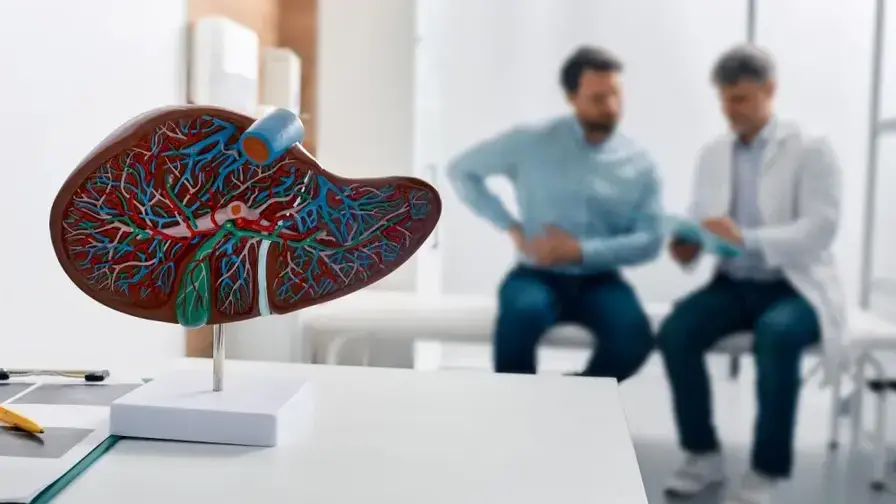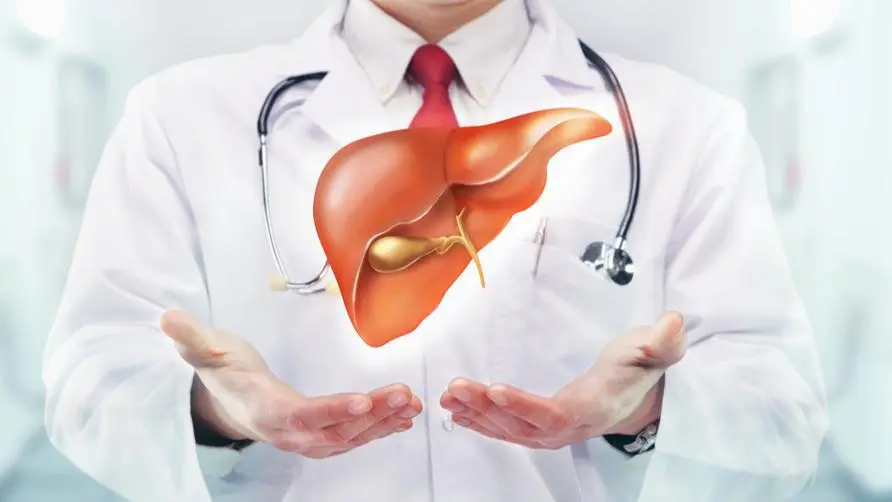The 28-year-old engineer "doesn't smoke or drink" still has fatty liver! Doctors warn young people: 1 in 3 people have fatty liver

A 28-year-old man who “doesn’t smoke or drink” still has fatty liver! An inspection revealed that “this data” has already exceeded the standard.
Even if young people don’t smoke or drink, “fatty liver” will still sneak up on them and put a “black-and-white filter” on their happy life? Dr. Chen Jixing, the attending physician of the Gastroenterology and Hepatobiliary Department of Chimei Hospital, said that he had previously admitted a 28-year-old male engineer who did not smoke or drink, had no habit of taking Chinese herbal medicine, and had no history of chronic disease. However, due to his busy work schedule, three meals out and lack of exercise, the patient’s weight gradually increased.
During a physical examination at the company, the patient unexpectedly discovered that his liver index was on the high side, and the ultrasound examination showed “severe fatty liver.” He was frightened and quickly sought medical treatment and arranged for a blood test. The result showed that he had not contracted viral B or C viruses. Hepatitis, and other autoimmune and metabolic disorders. Since the patient’s BMI was 27.7 (kg/m2) and triglycerides and low-density cholesterol were relatively high, he was diagnosed with metabolic fatty liver disease (MAFLD).
One in every three people in Taiwan has fatty liver? Doctor: The cause is inseparable from “it”
In recent years, as Taiwanese people’s diet has become more Westernized, the proportion of patients with fatty liver disease and metabolic syndrome has also increased. If fatty liver disease is not improved in time, it may cause damage to liver cells, leading to “steatohepatitis”; it may even lead to the “trilogy of liver cancer”, and the disease may progress to cirrhosis and liver cancer. According to statistics, the prevalence rate of fatty liver in Taiwan is about 33.3%; in Asia, for every 1,000 patients with fatty liver, about 5.3 people will die in a year.
According to statistics from the Taiwan Ministry of Health and Welfare in 2023, about 80% of liver cancers are caused by viral hepatitis B and C; the other 20% are caused by fatty liver. Dr. Chen Jixing pointed out that non-alcoholic fatty liver (metabolic fatty liver) disease is often ignored by the public, but scholars have found that the main cause of death in this group is not liver cancer or cirrhosis, but cardiovascular disease; and it is often related to lipids, Abnormal carbohydrate metabolism and obesity are related.
Dr. Chen Jixing said that metabolic fatty liver can be diagnosed as long as there is fatty liver plus any of the following conditions, including being overweight (BMI≧23), type 2 diabetes, and having evidence of 2 metabolic abnormalities (including excessive waist circumference, high blood pressure, high triglycerides, reduced high-density cholesterol, prediabetes, excessive insulin resistance and increased C-reactive protein, etc.).
Among them, the evidence of metabolic abnormalities almost overlaps with the diagnostic conditions of “metabolic syndrome” (more than 3 out of 5 abnormalities: excessive waist circumference, high blood pressure, high triglycerides, low high-density cholesterol, and prediabetes). Patients with metabolic syndrome have a significantly higher risk of developing diabetes, hypertension, hyperlipidemia, cardiovascular disease, stroke, and cardiac death in the future. “Fatty liver can be said to be ’the manifestation of metabolic syndrome in the liver’!”
What are the diagnostic methods for fatty liver? Not necessarily an invasive inspection?
Dr. Chen Jixing pointed out that the common diagnostic tool for fatty liver is “ultrasound examination”, but it can only show the general condition of fatty liver and cannot actually know the inflammation of liver cells. As for the diagnosis of steatohepatitis, currently only “liver tissue” sections can directly distinguish and accurately evaluate the degree of steatohepatitis and fibrosis. However, liver biopsy is an “invasive” examination, and patients may have doubts before undergoing the examination.
Therefore, the instant and non-invasive examination instrument “Fibroscan” has been released in recent years, which can be used as a tool to assist in the diagnosis of fatty liver and is expected to gradually replace liver slices. Liver fiber scanner is a device for detecting liver fibrosis and quantifying fatty liver. The principle is to use the vibration waves generated by the probe to enter the liver tissue, and use ultrasound to track the vibration waves, measure their propagation speed, and quantify liver stiffness to evaluate the degree of liver fibrosis.
Dr. Chen Jixing said that the liver fiber scanner can not only shorten the detection time (the process is about 5-10 minutes), but also has the advantages of being painless, non-invasive, and detecting a large range of liver tissue. It also has high sensitivity and It is specific and can be used repeatedly in patients who require long-term follow-up. Currently, there is no health insurance coverage for this examination, and the cost ranges from approximately NT$1,000 to NT$2,000.
How can young people improve fatty liver disease? Doctor: Remember the dietary principle of “three less and one high”
Dr. Chen Jixing emphasized that there is currently no specific drug that can effectively treat fatty liver; therefore, the first priority is to improve metabolic syndrome and insulin resistance, and the most important ones are diet control, exercise and weight loss. Patients can refer to the principle of the “Three Less and One High Diet” and supplement it with exercise to help improve fatty liver problems: the basic principle of “Three Less and One High” is “less oil, less salt, less sugar, and more fiber”.
The “Three Less and One High Diet” can help reduce daily calories by about 500-1,000 calories, maintain a healthy weight and reduce the accumulation of liver fat. Dr. Chen Jixing also said that limiting alcohol is also part of a healthy life. Since the liver is the main organ for metabolizing alcohol, abstaining from alcohol or drinking to a minimum can reduce the burden on the liver and reduce the risk of chronic diseases.
In addition, patients should accumulate up to 150 minutes of moderate-intensity exercise per week (or 30 minutes per day), such as swimming, brisk walking, jogging, cycling, etc., which have a significant effect on improving cardiopulmonary function and reducing fat accumulation. Persevere. Dr. Chen Jixing pointed out that the essence of weight loss lies in “fat reduction”. Patients should lose 0.5-1kg per week and 10% of their original weight within six months as a principle; do not rush to lose weight quickly, otherwise it may lead to poor metabolism. changes, leading to worsening of the condition.
For patients who meet the obesity criteria, doctors can use legal weight loss drugs to reduce appetite, slow down gastric emptying, and reduce intestinal absorption to achieve weight loss. As for morbidly obese patients, surgical gastric bypass surgery can be considered . In general, Dr. Chen Jixing reminded that the prerequisite for reversing fatty liver is improving metabolic syndrome, and suggested that young patients follow the above principles to get rid of the threat of fatty liver as soon as possible.
Extended reading:





